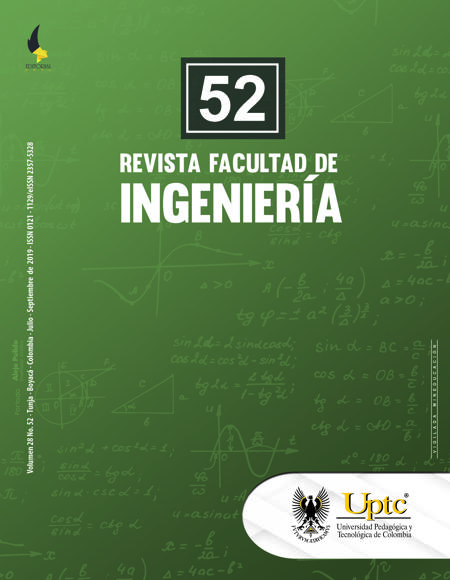Improvements of the Design Process in the Microwave Transistors Industry

Abstract
This paper presents a technique to improve the design process of microwave transistors based on two aspects: an improved design of experiment test (DOE), and an electro-thermal enhanced model (MET). The DOE test allowed us to center the design through variations in specific parameters, avoiding complex electromagnetic simulations of mutual coupling between the wires inside the transistor, which generally, in conventional CAD tools present a high computational cost. The electro-thermal model, enhanced by using the effective voltage approach, allowed us to predict not only the self-heating phenomena, but also the appropriate impedances for transistor´s maximum output power and maximum efficiency. In this way it was possible to select the operating conditions which can warrant low self-heating and the best trade-off between power, efficiency and linearity. The presented techniques are specifically important for the implementation of power amplifiers for the future wireless communication systems which must be designed to operate with broad band signals. The combination of our proposed techniques can allow the reduction of the design time and associated costs at industrial level. The improved design of experiment permitted to center the design of the transistor, making sure that the designer can get the best performances of the transistor. The thermal characterization allows to make sure that the microwave transistor operates below the maximum allowed temperature in a built power amplifier, which warrants the reliability of the system.
Keywords
circuits, microwave, power semiconductors, radio communication, transistors
References
[1] E. Lan et al., “High power density InGaP PHEMTs for 26 V operation,” in IEEE RFIC Symposium. Digest, Long Beach, CA, USA. 2005.
[2] P. Moens, G. Van den Bosch, and M. Tack, “Hole Trapping and de-Trapping Effects in LDMOS Devices under Dynamic Stress,” in International Electron Devices Meeting. St Francisco, CA, USA. 2006. https://doi.org/10.1109/iedm.2006.346999.
[3] J. Seto, Quiescent Current Control for the RF Integrated Circuit Device Family, 2004. Available at: https://www.nxp.com/docs/en/application-note/AN1987.pdf.
[4] O. Tomblad, and C. Blair, “An Electrothermal BSIM Model for Large-Signal Operation of RF Power LDMOS Devices,” in IEEE MTT-S International Microwave Symposium Digest, Seattle, WA, USA, 2002. https://doi.org/10.1109/mwsym.2002.1011766.
[5] G. Rafael-Valdivia, and Z. Su, “Non-linear modeling for low and high power microwave transistors,” in 46th European Microwave Conference (EuMC), 2016. https://doi.org/10.1109/eumc.2016.7824476.
[6] P. Poire, H. Simard, F. Ghannouch, and G. Brassard, “Optimization of the performances of MESFET based microwave amplifiers using Plackett-Burman design of experiment”, in IEEE Instrumentation and Measurement Technology Conference, Canada, May. 1997. https://doi.org/10.1109/imtc.1997.603934.
[7] A.N. Chandorkar, S. Mande, and H. Iwai. “Estimation of process variation impact on DG-FinFET device performance using Plackett-Burman design of experiment method,” in 9th International Conference on Solid-State and Integrated-Circuit Technology, Beijing, China, 2008. https://doi.org/10.1109/icsict.2008.4734510.
[8] G. Rafael-Valdivia. “RF Power Amplifier design for wireless networks and data communication systems,” in MOMAG: 18º SBMO – Simpósio Brasileiro de Micro-ondas e Optoeletrônica; 13º CBMAG – Congresso brasileiro de eletromagnetismo. Instituto Nacional de Telecomunicações, Inatel, Santa Rita do Sapucaí Brasil. 2018.
[9] G. Rafael, “Modelo compacto con capacidad de predicción de parámetros físicos para amplificadores de RF,” Revista Facultad de Ingeniería, vol. 28 (51), Apr. 2019. https://doi.org/10.19053/01211129.v28.n51.2019.9132.
[10] Z. Mokhti, P. Tasker, and J. Lees. “Correlation analysis between a VNA-based passive load pull system and an oscilloscope-based active load pull system: A case study,” in 83rd ARFTG Microwave Measurement Conference, Tampa, FL, USA. 2014. https://doi.org/10.1109/arftg.2014.6899535.
[11] M. Chetibi, M. Gares, M. Masmoudi, H. Maanane, J. Marcon, K. Mourgues, and P. Eudeline. “RF power LDMOSFET characterization and modeling for reliability issues: DC and RF performances,” in 26th International Conference on Microelectronics, Serbia & Montenegro, 2008. https://doi.org/10.1109/icmel.2008.4559250.
[12] A. Huang, Z. Zhong, Y. Guo, and W. Wu, “A novel extrinsic parameter extraction method for the technology independent modeling of transistors,” in Asia-Pacific Microwave Conference (APMC), Nanjing, China, 2015. https://doi.org/10.1109/apmc.2015.7412946.
[13] C. Cassan, and P. Gola, “A 3.5 GHz 25 W Silicon LDMOS RFIC power amplifier for Wimax application,” in IEEE International Microwave Symposium (IMS), Honolulu, Hawai, 2007. https://doi.org/10.1109/rfic.2007.380839.
[14] D. Burdeaux, and W. Burger, “Intrinsic reliability of RF power LDMOS FETs,” in International Reliability Physics Symposium, 2011. https://doi.org/10.1109/irps.2011.5784514.